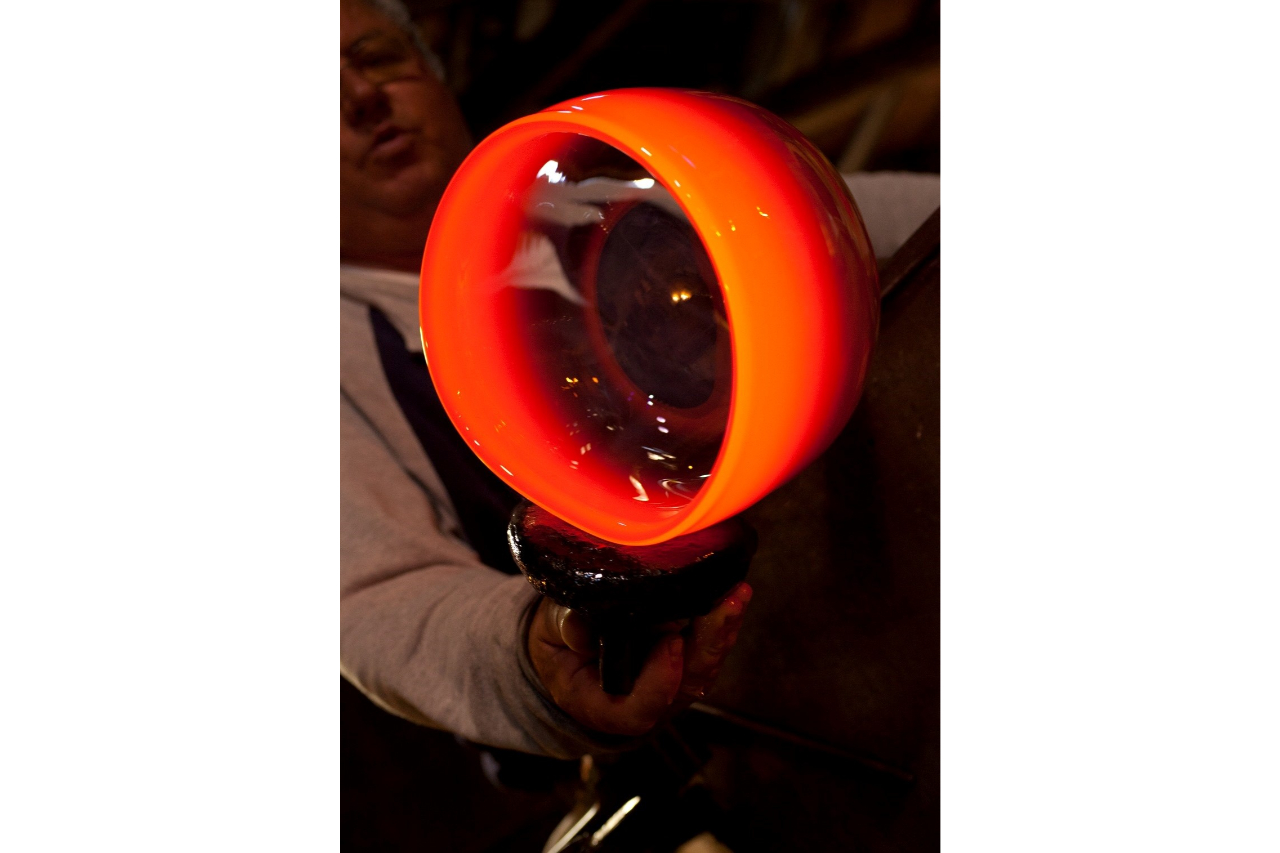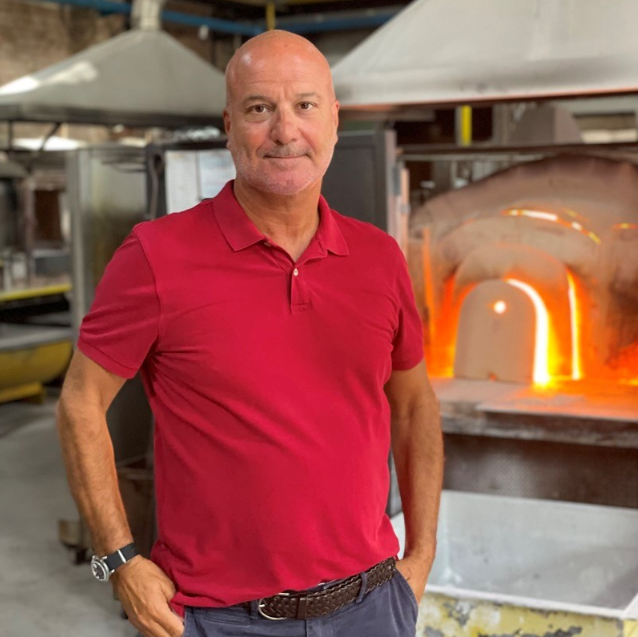









Since the era of the Venetian Republic, the craftsmanship of Murano's master glassmakers has been a leading example of Italian excellence. Milano Home spoke with Luciano Gambaro, the head of the Promovetro Consortium, to explore the future prospects and current trends in the industry, as well as to discuss its challenges and strengths.
Vases, glass sets, goblets, candelabra, mirrors, centrepieces, chandeliers, wall lights, paperweights, photo frames, sculptures, and a plethora of home decor items and more besides. A kaleidoscope of colour and sophistication is embodied in the furnishings and decorative accessories crafted from Murano glass, which create an ambiance of vibrant hues and illumination that harmonises with the architecture of any home. While rooted in well-established aesthetic principles, Murano glass has traversed centuries, evolving with the times, thanks to the expertise and artistry of the master glassmakers whose classic and contemporary creations adorn homes across the world.
Milano Home spoke with Luciano Gambaro, President of the Promovetro Consortium, to assess the future outlook of this noble market segment, understand the industry's challenges, examine demand patterns, and explore the evolution of consumer tastes and trends.
“The Murano artistic glass district is expanding its partnerships with designers, fashion brands, and manufacturers renowned worldwide for their exceptional products, ranging from spirits to fragrances,” says Gambaro. ”The market is strengthening and holds promising prospects for the future, emphasising quality over mass production. Murano has consistently served as a global hub for artists and architects wishing to craft their glass creations using the island's furnaces, workshops, and skilled artisans.”
How many companies are there in the manufacturing district?
“The most recent survey conducted by the Consortium showed that there are approximately sixty glass-making furnaces currently operational in Murano. Of these, 80% are affiliated with the Promovetro Consortium and collectively they employ around a thousand people in production and sales. The total revenue generated in 2020 was approximately 150 million euros.
The roughly forty members of the Consortium are evenly split between primary processing firms – those with their own furnaces – and secondary processing firms, which produce items using glass sourced from external suppliers, yet always originating from Murano.”
Can you describe the current situation and list the main challenges?
“The sector has experienced a decline in numbers, though not in quality, in recent years. This downturn is attributable not only to rising costs but also, and perhaps primarily, to the influx of Italian and international competitors that have flooded the market, including online platforms, with fake or imitation products offered at significantly low prices, undermining the value of the entire sector, with indiscriminate use of the terms ‘Vetro di Murano’ or ‘Murano Glass’. Therefore, it is of paramount importance to protect and preserve this tradition.
The only existing mechanism in support of Murano glass is the collective trademark of origin, Vetro Artistico® Murano. Established by the Veneto Region through Law No. 70 on 23 December 1994. The trademark is managed by the Promovetro Consortium and is the sole official certification that guarantees the authenticity of the product to customers and simultaneously protects the rights of the manufacturers. This safeguard may soon be reinforced by the forthcoming European IG (Indication of Geographical origin) mark, for the protection of geographical indications for artisanal and industrial products as established by European Regulation 2023/2411, which will presumably will come into effect within the next two years.”
The ongoing issue of energy costs
“Recently, our sector has faced the addition of the rampant surge in gas prices to its existing challenges. Although there has been a partial reduction, this increase exposed the vulnerability of our industry, which is characterised by its significant reliance on gas. Confronted with raw material cost hikes of up to 1300%, our sector has managed to endure and avoid shutdowns solely due to the support from regional and national assistance.
We are also striving to tackle the issue of generational transition, which is arguably the most complex challenge that artisan Murano glass-making businesses face.
In terms of artistic production, Murano glass beads – which have been produced on the Venetian island of Murano since the 14th century – deserve their own distinguished mention.
“Beads can be categorised into three types: 'conteria' (dating back to the 14th century, these are very small and monochromatic, and are no longer produced); 'rosetta' (developed in the 15th century, crafted from rods with multiple polychromatic layers that are pierced through); or 'a lume' (originating from the 17th century, which are created by melting glass rods filled with various colours, which are then heated to emit light, resulting in an endless array of designs and variations).
Since 2021, the craft of glass bead-making has been recognised as UNESCO Intangible Cultural Heritage.
Which geographical areas are most significant in terms of revenue generation?
“The market is predominantly international, encompassing both European and non-European regions, with a particular focus on North America and the Far East –areas known for their inclination towards purchasing luxury products. However, market conditions are highly dynamic and fragmented, and can fluctuate considerably from one year to the next, depending on the volume of orders received.”
Sustainability is an issue that cannot be overlooked these days. How does the Consortium work to encourage responsible engagement with the environment?
“Researchers are exploring different methods to fuel production furnaces, including a novel hybrid furnace that alternates between gas and electricity during various stages of heating. This approach could significantly cut energy expenses and facilitate the adoption of more environmentally friendly energy sources.”
Encouraging research and innovation to create new and more efficient furnaces is a praiseworthy strategy that deserves support and will benefit both the industry and society at large. Improving the effectiveness and efficiency of glass recycling and disposal, as well as alleviating the load on businesses, is another vital aspect to take into account in striving for the system's overall environmental sustainability.
“We have already made tangible progress in this area. Re-hub, a start-up based in Murano, has developed a method that turns waste glass into a malleable paste. This paste can be moulded by hand or utilised with 3D printers and injection techniques at room temperature, enabling considerable energy savings and enabling the conversion of glass waste into new products. Also in the field of green energy, we are considering establishing an energy community by developing a photovoltaic facility with an approximate capacity of 20 MW. This proposal, put forward by the company Agnes, aims to rejuvenate the deteriorated area of Sacca San Mattia. The renewable energy generated by this plant would offer a tangible opportunity to reduce carbon emissions within the sector.”
An enduring beauty that stands the test of time. What relationship do young people have with Murano glass? Have you expanded your product range to include anything specific that appeals to the younger generations?
Murano glass holds less allure for the newer generations, particularly those in Italy, compared to its popularity in the 1960s and 1970s. This type of glassware, once cherished by parents and grandparents, has gradually lost its 'cool' factor among the under-40s.
Cultural initiatives, such as ‘The Venice Glass Week’ festival, along with increasingly strategic partnerships with young designers, are casting new light on a material steeped in a millennium of Venetian tradition. Interest in traditional Murano craftsmanship, including mirrors, crystal vases, chandeliers, and the like, continues to be strong within the luxury market, extending to individuals under 40 across various regions of the globe.”
Luciano Gambaro (born in Venice in March 1965) hails from a long line of Murano glassmakers. In the mid-1980s, he joined the family business, Gambaro & Poggi, where he began focusing on the commercial aspects. In 2015, the company welcomed master glassmaker Matteo Tagliapietra, a former apprentice of Luciano’s father, Mario Gambaro, as a partner, and subsequently became Gambaro & Tagliapietra - Murano Glass Studio. A staunch defender of Murano glassmaking artistry, he joined the Board of Directors of the Promovetro Murano Consortium in the early 2000s, and has served as its president since 2010.
